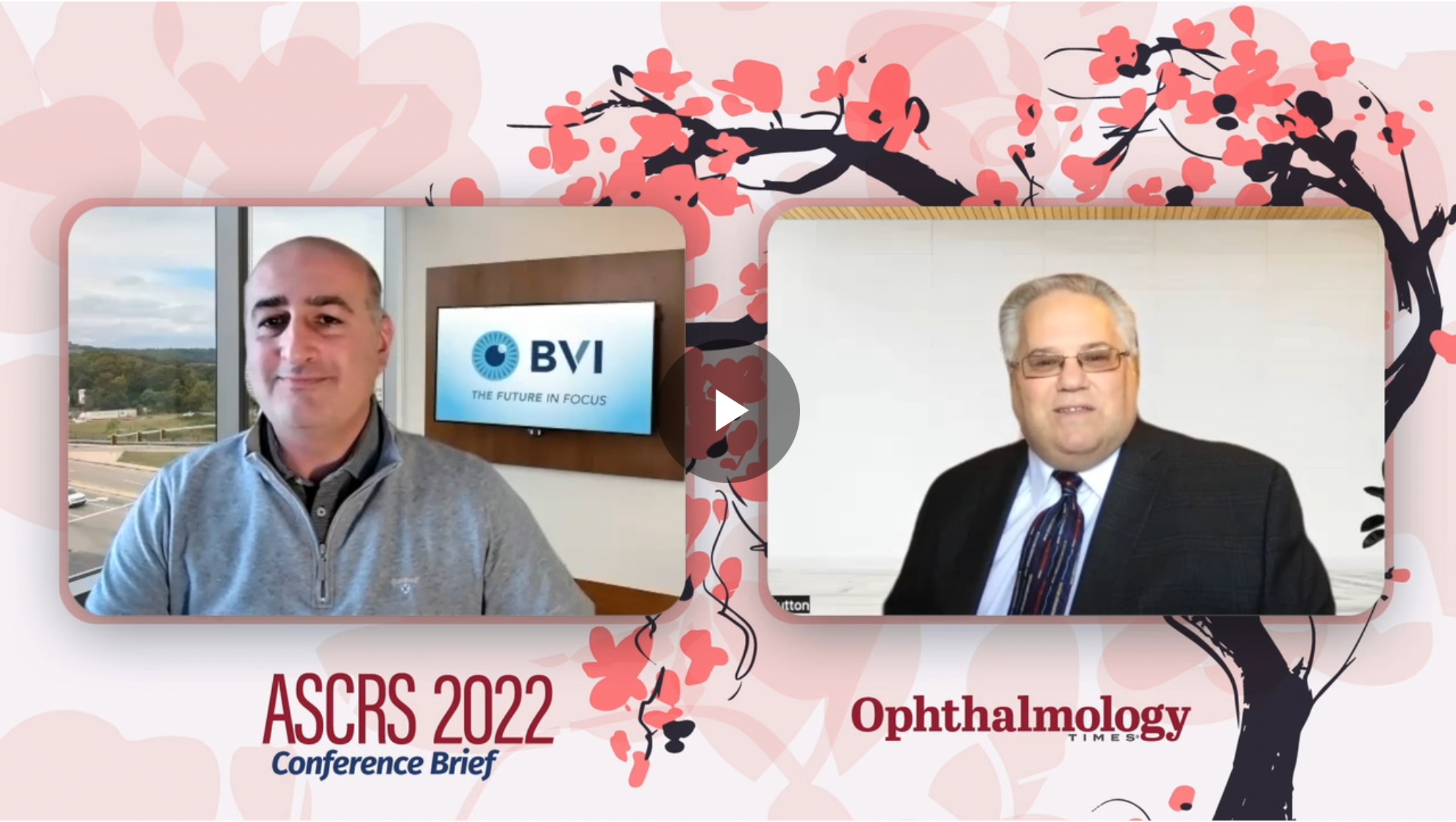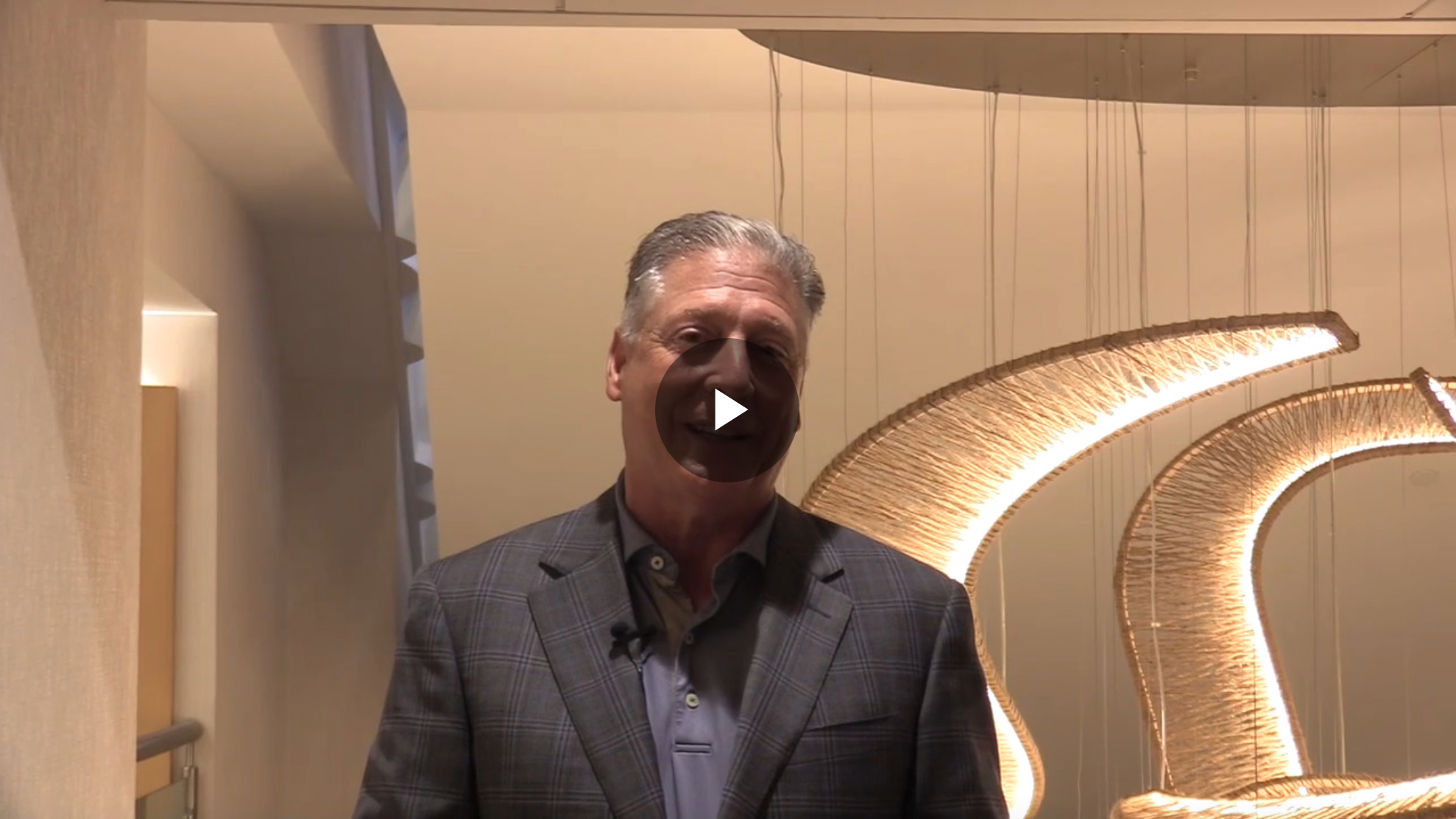ASCRS review for retina specialists
A variety of surgical advances were presented at ASCRS; here is a brief overview for retina specialists.
American Society of Cataract and Refractive Surgery (ASCRS) 2022 Annual Meeting took place April 22-26 in Washington, DC. The meeting featured a variety of advances in ophthalmic surgery.
Ophthalmic surgery
Chuck Hess, vice president and general manager, Bausch + Lomb, discusses XIPERE™, the first and only therapy available in the United States that utilizes the suprachoroidal space to treat patients suffering from macular edema associated with uveitis, and other new things rolled out recently from the company.
Effects of diabetic retinopathy on early visual outcomes after cataract surgery
According to an e-poster presented by Jagadesh C. Reddy, MD, and Harini Indusekar, BScOptom, patients who have pre-existing DR are less likely to achieve Snellen 20/40 or better vison after cataract surgery compared with the patients with diabetes but without DR.
Keeping an eye on CME: How to treat, when to refer
Christina Weng, associate professor of ophthalmology, Baylor College of Medicine, Houston, talked about the importance of managing potential pseudophakic cystoid macular edema (CME) following cataract surgery.
Expanding into bionics, BVI shares new technology during ASCRS 2022
Shervin Korangy, CEO of BVI, shares about the company's new technology, on display during ASCRS 2022.
Anushka M. Raj, BS, second year medical student at the University of Oklahoma’s Dean McGee Eye Institute, presents "Inter-Device Measurement Reliability of Angle Kappa and Angle Alpha, Devices and Instruments" during ASCRS.
Presbyopia
Visus Therapeutics presents positive phase 2 data from their presbyopia trials
Ben Bergo, CEO of Visus Therapeutics, gives a company update on the company's presented phase 2 data, and what's next in the pipeline.
CSF-1 Phase 2B clinical trials for presbyopia met primary and secondary endpoints
Marjan Farid, MD, ABO, and Preeya K. Gupta, MD, offered details of clinical trials for CSF-1 ophthalmic solution, a presbyopia eye drop candidate. Results showed that nearly half of the participants treated with CSF-1 achieved a 3-line or more increase in the distance-corrected near visual acuity an hour after drop instillation on day 15.
Orasis phase 2b data for CSF-1 presented at ASCRS
For the first time, Orasis Pharmaceutical's phase 2b data for the company's novel candidate for the treatment of presbyopia, CSF-1, a preservative-free solution that contains a proprietary combination of low-dose pilocarpine and multi-faceted vehicle, was presented during ASCRS by Marjan Farid, MD, and Preeya Gupta, MD. The company recently released its phase 3 topline results. Orasis' Paul Smith, president and COO, talks with Ophthalmology Times' Sheryl Stevenson about this data and the findings' relevance to patients and providers.
Cornea & cell therapy
Endothelial cell therapy: up to 100 treatments from one human cornea
John Berdahl, MD, discusses the technique and benefit of endothelial cell therapy. An early technology, this therapy method allows for up to 100 treatments out of a single human cornea.
Topical treatment improves corneal healing in pediatric patients with neurotrophic keratitis
In an e-poster, Abdelrahman M. Elhusseiny, MD, MSc, noted a research team found that cenegermin was effective for improving the corneal healing in these pediatric patients.
Study: Effects of two dosing regimens of Netarsudil in patients with Fuchs corneal dystrophy
Richard L. Lindstrom, MD, of Minnesota Eye Consultants, discusses his ASCRS presentation, "Randomized, Open-Label, Parallel-Group Study of Two Dosing Regimens of Netarsudil in Patients with Fuchs Corneal Dystrophy."
The effects of corneal cross linking on preventing and treating progressive keratoconus
Philip Dockery, MD, MPH, discusses his paper "Corneal cross linking for progressive keratoconus, a retrospective analysis of 515 consecutive eyes."
Glaucoma
ViaLase shares updates on new technology to treat glaucoma, company updates and upcoming trials
Tom Frinzi, executive chairman of ViaLase, a new company based in Orange County, gives an update on the company, sharing some exciting new things happening.
Characteristics of patients seeking in-office glaucoma follow-up care after an ER visit
About 65% of patients sought follow-up care for glaucoma after presentation to the Wills Eye Hospital emergency room (ER), according to Elliot G. Cherkas, BSc, the lead author of the study.
Newsletter
Keep your retina practice on the forefront—subscribe for expert analysis and emerging trends in retinal disease management.





